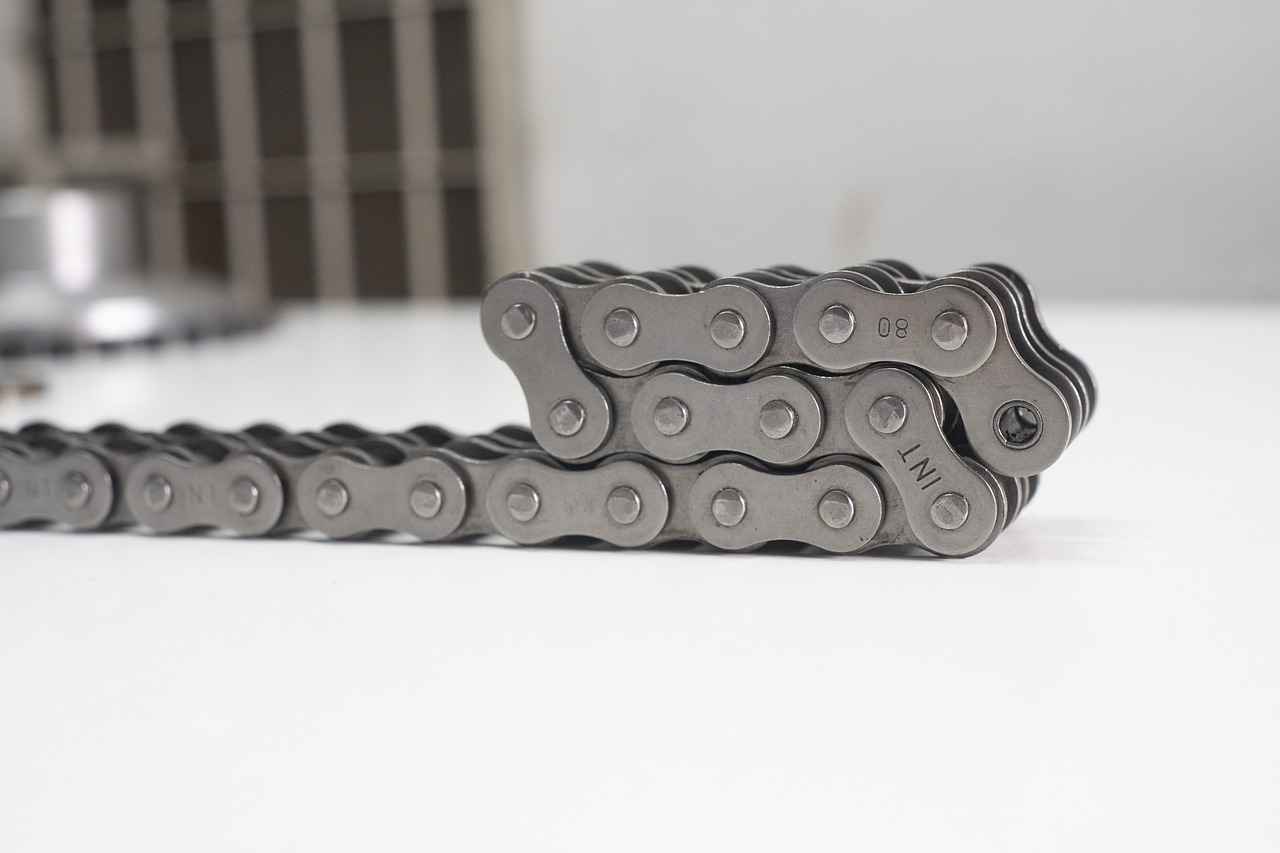Reupholstering car seats can breathe new life into an aging vehicle, offering both aesthetic and functional benefits. However, understanding the cost factors, materials, and considerations involved in this process is crucial for anyone contemplating this service. This article provides valuable insights that will help you make informed decisions about reupholstering your car seats.
The cost of reupholstering car seats can vary significantly based on several factors:
- Type of Vehicle: Luxury cars often have more complex seat designs, which can increase the cost.
- Material Choice: The choice between leather, fabric, or eco-friendly materials impacts pricing.
- Labor Costs: Regional labor rates can vary, affecting the total expense.
- Condition of Existing Seats: If repairs are needed before reupholstering, this can add to the overall cost.
The choice of upholstery material is vital, impacting both the look and durability of your car seats. Here are some popular options:
- Leather: Known for its luxurious feel and durability, leather requires specific maintenance.
- Fabric: Available in a variety of colors and patterns, fabric can offer comfort but may not be as long-lasting as leather.
- Eco-Friendly Options: Sustainable materials are gaining traction among environmentally-conscious consumers.
Labor costs can significantly influence the price of reupholstering car seats. Factors include:
- Location: Urban areas typically have higher labor rates than rural regions.
- Complexity: Intricate designs or additional features can increase labor time and cost.
On average, reupholstering car seats can range from $300 to $1,500, depending on various factors:
- Materials: Expect to pay more for high-quality leather compared to standard fabric.
- Labor: Costs can vary, with typical rates ranging from $50 to $150 per hour.
When reupholstering car seats, you might want to consider additional services that can enhance the overall experience:
- Seat Repair: Addressing underlying issues before reupholstering can save money in the long run.
- Custom Designs: Personalized features can add a unique touch but may increase costs.
Understanding these aspects of reupholstering car seats will empower you to make informed decisions. Whether you prioritize cost, material quality, or additional services, being well-informed will help you achieve the best results for your vehicle.

What Factors Influence the Cost of Reupholstering Car Seats?
Reupholstering car seats is a significant investment for many vehicle owners, and understanding the various factors influencing this cost is crucial for effective budgeting and informed decision-making. The price of reupholstering can vary widely based on several key elements that potential customers should consider. This article delves into these factors, providing a comprehensive overview that aids in anticipating the expenses involved.
When contemplating reupholstering, it’s essential to recognize that the overall cost is not solely determined by the choice of materials. Instead, various aspects come into play, including:
- Type of Vehicle: The make and model of your car significantly impact the cost. Luxury vehicles often require specialized materials and techniques, increasing the overall price.
- Upholstery Material: The choice between leather, fabric, or synthetic materials can affect the cost. Leather tends to be more expensive due to its durability and aesthetic appeal, while fabric options may offer a more budget-friendly alternative.
- Labor Costs: Labor rates can vary based on geographical location and the expertise of the upholsterer. Highly skilled professionals may charge more, but their quality of work can justify the expense.
- Extent of Work Required: If the seats require additional repairs or modifications, such as padding replacement or structural adjustments, this can significantly increase the total cost.
- Customization: Custom designs or features, such as unique stitching patterns or integrated heating elements, can add to the overall expense, but they also enhance the vehicle’s uniqueness.
Understanding these factors allows car owners to prepare for the financial implications of reupholstering their seats. It’s advisable to gather multiple quotes from different service providers to ensure that you receive a fair estimate based on the specific needs of your vehicle.
The choice of upholstery material is one of the most significant decisions impacting both the cost and longevity of your car seats. Here are some considerations:
- Durability: Materials like leather are known for their longevity and resistance to wear and tear, making them a worthwhile investment for those who plan to keep their vehicle for an extended period.
- Maintenance: Different materials require varying levels of maintenance. Leather, for example, needs regular conditioning, while fabric may require more frequent cleaning due to stains and wear.
- Aesthetics: The right material can enhance the overall look of your vehicle’s interior, potentially increasing its resale value.
In summary, understanding the various factors that influence the cost of reupholstering car seats is essential for effective budgeting and decision-making. By considering the type of vehicle, upholstery materials, labor costs, and customization options, car owners can make informed choices that align with their needs and financial constraints. Always consult with professionals and gather multiple estimates to ensure you are making the best decision for your vehicle.

What Are the Different Types of Upholstery Materials?
The choice of upholstery material significantly affects both the aesthetics and durability of car seats. With a variety of options available, it’s essential for car owners to understand the implications of their choice. This section examines the most popular upholstery materials and their unique characteristics.
- Leather: Known for its luxurious feel and durability, leather upholstery is a popular choice among car enthusiasts. It offers a sophisticated look and can withstand wear and tear over time. However, it requires regular maintenance to prevent cracking and fading.
- Fabric: Fabric upholstery provides a wide range of colors and patterns, making it a versatile choice. While it may not be as durable as leather, it is often more affordable and easier to clean. Different fabric types, such as polyester, nylon, and cotton blends, offer varying levels of comfort and durability.
- Vinyl: Vinyl is a synthetic alternative that mimics the appearance of leather. It is water-resistant and easy to clean, making it suitable for families with children or pets. However, it may not provide the same level of comfort as genuine leather.
- Suede: Suede upholstery adds a touch of elegance to car interiors. It is soft and comfortable but can be more susceptible to stains and damage. Proper care is essential to maintain its appearance.
- Eco-Friendly Materials: For environmentally-conscious consumers, eco-friendly upholstery options, such as recycled fabrics or organic materials, are becoming increasingly popular. These materials not only reduce environmental impact but also offer unique aesthetics.
When selecting an upholstery material, consider factors such as budget, lifestyle, and maintenance requirements. Each material has its own set of advantages and disadvantages, making it crucial to choose one that aligns with your needs.
In addition to aesthetic appeal, the choice of upholstery can also influence the resale value of your vehicle. High-quality materials like leather tend to enhance resale value, whereas lower-quality fabrics may detract from it. Therefore, investing in the right upholstery material can be a smart financial decision in the long run.
Ultimately, the decision regarding upholstery material should be based on a combination of personal preference, practical considerations, and long-term value. By understanding the different types of upholstery materials available, car owners can make informed choices that enhance the comfort and style of their vehicles.
Leather vs. Fabric: Which Is Better?
When it comes to choosing upholstery for your car seats, the decision often boils down to two primary materials: leather and fabric. Each option presents its own set of benefits and drawbacks, making it essential for car owners to weigh their choices carefully based on comfort, maintenance, and budget.
Understanding the differences between leather and fabric upholstery can significantly impact your driving experience. Here are some critical aspects to consider:
- Comfort: Leather upholstery offers a luxurious feel and tends to be cooler in summer and warmer in winter, while fabric can provide a softer touch but may retain heat.
- Maintenance: Leather requires regular cleaning and conditioning to prevent cracking, whereas fabric is often easier to clean but may stain more easily.
- Durability: Leather is generally more durable and can withstand wear and tear better than many fabric options, making it a long-term investment.
- Cost: Leather tends to be more expensive than fabric, but its longevity can justify the higher price point.
Both leather and fabric have unique performance characteristics that can influence your decision:
| Feature | Leather | Fabric |
|---|---|---|
| Longevity | High | Moderate |
| Maintenance | Moderate to High | Low to Moderate |
| Comfort | High | High |
| Cost | Higher | Lower |
Choosing between leather and fabric also involves aesthetic preferences:
- Variety: Fabric upholstery comes in a wide array of colors and patterns, allowing for greater personalization.
- Luxury Appeal: Leather often conveys a more luxurious and sophisticated look, appealing to those who prioritize style.
For environmentally-conscious consumers, the choice between leather and fabric can also hinge on sustainability:
- Leather: While genuine leather is durable, its production can be resource-intensive and may raise ethical concerns.
- Fabric: Many fabric options are made from synthetic materials, but there are eco-friendly alternatives available, such as organic cotton or recycled fibers.
In conclusion, the choice between leather and fabric upholstery ultimately depends on your personal preferences, budget, and lifestyle. By considering factors such as durability, maintenance, and aesthetics, you can make an informed decision that best suits your needs.
Durability and Maintenance of Leather Upholstery
Leather upholstery is often regarded as a symbol of luxury and sophistication in vehicles. Its durability and timeless appeal make it a popular choice among car owners. However, to maintain its rich appearance and longevity, specific maintenance practices are essential.
Leather, while inherently strong, can be susceptible to damage if not cared for properly. Factors such as sunlight exposure, humidity, and wear and tear can lead to fading, cracking, and stiffness over time. Regular maintenance not only preserves the leather’s aesthetic but also extends its lifespan, making it a worthwhile investment.
- Regular Cleaning: Dust and dirt can accumulate on leather surfaces, leading to a dull appearance. Use a soft, dry cloth to wipe down the seats regularly. For deeper cleaning, opt for a leather cleaner specifically designed for automotive use.
- Conditioning: Leather needs moisture to stay supple. Applying a leather conditioner every 6 to 12 months helps to replenish lost oils and prevent cracking. Ensure the conditioner is free from harsh chemicals that could damage the leather.
- Avoiding Direct Sunlight: Prolonged exposure to sunlight can cause leather to fade and dry out. Whenever possible, park in shaded areas or use windshield sunshades to protect the interior.
- Immediate Stain Treatment: Accidents happen, and spills can occur. It’s crucial to address stains immediately. Blot the area with a clean cloth and use a leather-safe cleaner to remove any residue.
Many car owners unknowingly make mistakes that can harm their leather upholstery. Here are some common pitfalls:
- Using Harsh Cleaners: Household cleaners can contain chemicals that are too abrasive for leather. Always choose products specifically formulated for leather care.
- Neglecting Regular Maintenance: Skipping regular cleaning and conditioning can lead to irreversible damage. Establish a maintenance routine to keep your leather looking its best.
- Over-Conditioning: While conditioning is essential, overdoing it can lead to a greasy feel. Follow the manufacturer’s recommendations on how often to apply conditioner.
While regular maintenance can significantly enhance the lifespan of leather upholstery, there are times when professional assistance is advisable. If you notice severe cracking, fading, or stains that won’t come out, consulting a professional leather restoration service can provide solutions that DIY methods cannot.
In summary, leather upholstery is an investment that requires dedication to maintenance. By understanding the proper care techniques and avoiding common mistakes, you can ensure that your leather seats remain a luxurious and durable feature of your vehicle for years to come.
Fabric Upholstery: Pros and Cons
When it comes to choosing upholstery for car seats, fabric upholstery presents a variety of options that can appeal to different tastes and budgets. Its ability to offer a vast range of colors and patterns makes it a popular choice among car owners. However, it is essential to weigh the advantages and disadvantages of fabric upholstery before making a decision.
- Variety of Designs: Fabric upholstery comes in numerous styles, colors, and textures, allowing car owners to personalize their interiors easily.
- Comfort: Fabric is often softer and more breathable than leather, providing a comfortable seating experience, especially in hot weather.
- Cost-Effective: Generally, fabric upholstery is less expensive than leather, making it an attractive option for budget-conscious consumers.
- Easy to Clean: Many fabric options are designed to be stain-resistant, which can simplify maintenance and upkeep.
- Durability: While fabric can be durable, it often does not match the longevity of leather. It may wear out faster, especially in high-use areas.
- Stains and Odors: Fabric is more susceptible to absorbing spills and odors compared to leather, which can be a significant drawback for families with children or pets.
- Limited Repair Options: When fabric upholstery is damaged, repairs can be more challenging compared to leather, which can often be patched or refinished.
Deciding between fabric and leather upholstery involves considering several factors:
- Usage: If you frequently transport children or pets, fabric may be more practical due to its ease of cleaning.
- Climate: In warmer climates, fabric can provide a cooler seating option, while leather may become hot and sticky.
- Budget: Evaluate your budget carefully; while fabric may be less expensive upfront, consider long-term durability and maintenance costs.
Understanding the pros and cons of fabric upholstery is vital for making an informed choice that aligns with your lifestyle and preferences. While fabric offers a range of aesthetic options and comfort, its potential drawbacks in durability and maintenance should not be overlooked. Ultimately, the decision should reflect your individual needs and priorities.
Eco-Friendly Upholstery Alternatives
As the demand for sustainable living grows, have emerged as a viable option for consumers who prioritize environmental responsibility. This section delves into various sustainable materials and their benefits, providing insights for those looking to make informed choices.
Choosing eco-friendly upholstery materials not only benefits the environment but also enhances the overall quality and longevity of your car’s interior. Sustainable materials are often produced with minimal environmental impact, reducing waste and pollution. Additionally, these materials can contribute to better indoor air quality, making your vehicle a healthier space.
- Organic Cotton: Grown without synthetic pesticides or fertilizers, organic cotton is a breathable and soft material, making it an excellent choice for car upholstery.
- Bamboo Fabric: Known for its rapid growth and renewability, bamboo fabric is naturally antibacterial and biodegradable, offering a sustainable alternative.
- Recycled Polyester: Made from recycled plastic bottles, this material helps reduce waste and provides a durable, water-resistant option for upholstery.
- Hemp: Hemp is a strong and durable material that requires minimal water and no pesticides, making it an eco-friendly choice that stands the test of time.
- Natural Leather: Sourced from animals raised in sustainable farming practices, natural leather can be a more environmentally responsible option compared to conventional leather.
Opting for eco-friendly upholstery materials offers several advantages:
- Durability: Many sustainable materials, like hemp and recycled polyester, are known for their strength, ensuring that your upholstery lasts longer.
- Healthier Environment: Eco-friendly materials often contain fewer harmful chemicals, contributing to better air quality within your vehicle.
- Reduced Carbon Footprint: By choosing materials that are sustainably sourced and produced, consumers can significantly lower their carbon footprint.
- Unique Aesthetics: Eco-friendly upholstery options often come in a variety of textures and colors, allowing for personalized and unique interior designs.
Maintaining eco-friendly upholstery is essential to ensure its longevity. Here are some tips:
- Regular Cleaning: Use gentle, eco-friendly cleaning products to avoid damaging the material.
- Spot Treatment: Address stains promptly to prevent them from setting in, using natural cleaning solutions when possible.
- Avoid Direct Sunlight: Protect your upholstery from excessive sun exposure to prevent fading and damage.
In conclusion, eco-friendly upholstery alternatives offer a sustainable and stylish choice for consumers looking to reduce their environmental impact. By understanding the benefits and care requirements of these materials, you can make informed decisions that align with your values while enhancing your vehicle’s interior.

How Does Labor Cost Impact the Overall Price?
When considering the reupholstering of car seats, one of the most significant factors influencing the overall price is labor costs. These costs can fluctuate considerably based on several aspects, including the geographical location of the service provider and the complexity of the project itself. Understanding these elements can help car owners prepare their budgets and make informed decisions.
Labor costs are not uniform and can vary based on various factors:
- Location: Urban areas typically have higher labor rates compared to rural locations due to the cost of living and demand for skilled labor.
- Complexity of the Job: Projects that require intricate designs or specialized techniques usually incur higher labor costs. For instance, reupholstering seats with custom stitching or unique patterns may take more time and expertise.
- Experience of the Upholsterer: Skilled professionals with years of experience may charge higher rates, but their expertise can lead to better quality workmanship.
Understanding the average labor costs in different regions can provide a clearer picture:
| Region | Average Labor Cost per Hour |
|---|---|
| East Coast | $100 – $150 |
| West Coast | $90 – $140 |
| Midwest | $70 – $120 |
| South | $60 – $110 |
Another consideration when it comes to labor costs is whether to take a DIY approach or hire professionals. Here are some points to consider:
- Cost Savings: DIY can save on labor costs, but it requires time, effort, and a certain level of skill.
- Quality of Work: Professional upholsterers have the tools and experience to ensure high-quality results, which might not be achievable with a DIY approach.
- Time Investment: A DIY project can take significantly longer than hiring a professional, especially if you are learning as you go.
When budgeting for reupholstering car seats, it’s essential to factor in both labor and materials. While labor can account for a significant portion of the total cost, the choice of upholstery material also plays a crucial role. For example, opting for high-quality leather will increase the material cost, but it may also enhance the overall value and durability of the seats.
In summary, understanding the various aspects of labor costs associated with reupholstering car seats is vital for making informed decisions. By considering factors such as location, job complexity, and whether to DIY or hire professionals, car owners can better prepare their budgets and expectations for this investment.
Average Labor Costs by Region
When considering the costs associated with reupholstering car seats, one of the most significant factors to keep in mind is the variation in labor costs across different regions. These costs can have a profound impact on the overall price of the reupholstering project, making it essential for car owners to understand the dynamics at play.
Labor costs are influenced by various factors, including local economic conditions, the cost of living, and the availability of skilled labor. In urban areas with a high cost of living, such as New York City or San Francisco, the rates for professional upholstery services can be significantly higher than in rural areas. On the other hand, smaller towns or regions with a lower demand for such services tend to offer more competitive pricing.
| Region | Average Labor Cost per Hour |
|---|---|
| West Coast | $75 – $150 |
| Midwest | $50 – $100 |
| South | $40 – $90 |
| Northeast | $60 – $130 |
As illustrated in the table above, labor costs can range widely, with the West Coast often experiencing the highest rates due to increased demand and higher living costs. In contrast, the South generally offers more affordable rates, making it a viable option for those on a budget.
Being aware of these regional differences allows car owners to make informed decisions when budgeting for reupholstering. For instance, if you reside in a region with higher labor costs, it might be worth considering alternative options, such as seeking services in nearby areas with lower rates or exploring DIY solutions if you have the necessary skills.
In addition to geographic location, the complexity of the reupholstering project can also affect labor costs. For example, custom designs or intricate patterns may require more time and expertise, leading to higher labor charges. Conversely, straightforward projects may incur lower costs, regardless of location.
- Research Local Options: Compare prices and services from multiple upholstery shops in your area.
- Ask for Estimates: Request detailed quotes that break down labor and material costs to better understand pricing.
- Consider Timing: Off-peak seasons may offer discounts or promotions, allowing you to save on labor costs.
Ultimately, understanding the variations in labor costs across regions not only aids in budgeting but also empowers car owners to make informed choices that align with their needs and financial constraints. By taking the time to research and compare options, you can ensure that your reupholstering project is both cost-effective and meets your expectations for quality and durability.
DIY vs. Professional Services: What to Consider
When it comes to reupholstering car seats, one of the most significant decisions you will face is whether to take a DIY approach or to hire professional services. This choice involves a careful assessment of various factors including cost savings, quality of work, and the time investment required for each option.
One of the primary reasons many individuals consider a DIY project is the potential for cost savings. By purchasing materials and doing the work yourself, you can significantly reduce the overall expense. However, it’s essential to recognize that while the initial outlay may be lower, there are hidden costs that can arise. For instance, if the DIY project takes longer than expected, you may find yourself spending more on materials or tools than if you had hired a professional.
Another critical factor to weigh is the quality of work. Professionals bring years of experience to the table, ensuring that the upholstery is not only aesthetically pleasing but also durable. They are skilled in handling various materials and can navigate complex designs or repairs that may be beyond the capabilities of a novice. In contrast, a DIY project may result in a less polished finish, which could diminish the overall value of your vehicle.
Time is another important element in this decision-making process. A DIY project can be time-consuming, especially if you are unfamiliar with the techniques involved in reupholstering. You might find yourself dedicating weekends or evenings to complete the job. On the other hand, professional services can typically complete the job much faster, allowing you to enjoy your newly upholstered seats without the long wait.
When considering a DIY approach, it’s crucial to factor in the tools and materials you will need. Upholstery requires specific tools, such as staplers, scissors, and possibly sewing machines. Additionally, sourcing high-quality materials can be challenging and may require significant research. Professionals, however, often have established relationships with suppliers, allowing them to procure materials at a better price and quality.
While DIY projects can be rewarding, hiring professionals often results in long-term benefits. Not only do they guarantee their work, but they also provide advice on maintenance and care, helping to extend the life of your upholstery. Moreover, a well-executed job can enhance the resale value of your vehicle, making it a worthwhile investment.
Ultimately, the decision between a DIY approach and hiring professionals should be based on your budget, skill level, and the importance of quality in your vehicle’s interior. If you have the time and expertise, a DIY project can be a fulfilling experience. However, if you prioritize quality and efficiency, investing in professional services may be the best route to take.

What Is the Average Cost for Reupholstering Car Seats?
When it comes to maintaining and enhancing the interior of a vehicle, one of the most impactful services is reupholstering car seats. Understanding what is the average cost for reupholstering car seats is crucial for car owners looking to budget effectively for this service. The expenses can vary widely based on several factors, including the type of materials chosen, the complexity of the work, and regional labor costs.
The average cost for reupholstering car seats typically ranges from $300 to $1,500 per seat, depending on various factors. Here are the primary considerations:
- Material Selection: The choice between leather, fabric, or synthetic materials can significantly influence the cost. Leather tends to be more expensive but offers durability and a luxurious feel.
- Labor Complexity: If the seats require extensive repair or custom work, labor costs can increase. More complex jobs may involve additional hours of skilled labor.
- Vehicle Type: The make and model of the vehicle also play a role. Luxury vehicles often incur higher costs due to specialized materials and craftsmanship.
Labor costs can vary significantly based on location. On average, expect to pay between $50 and $100 per hour for professional upholstery services. In metropolitan areas, rates may climb higher, reflecting the cost of living and demand for skilled labor.
- Average Labor Costs by Region:
- East Coast: $75 – $125 per hour
- Midwest: $50 – $80 per hour
- West Coast: $100 – $150 per hour
Choosing the right upholstery material is essential not just for aesthetics but also for practicality. Here are some popular options:
- Leather: Known for its durability and classic appeal, leather requires regular maintenance but can last for years.
- Fabric: Available in a variety of colors and patterns, fabric upholstery is often less expensive but may not withstand wear and tear as well as leather.
- Synthetic Options: Eco-friendly and often more affordable, synthetic materials can mimic the look of leather while offering easy maintenance.
When considering reupholstering, additional services can enhance the value of the project. Common add-ons include:
- Seat Repair: Addressing any underlying issues like tears or structural damage can save money in the long run.
- Custom Designs: Personalizing your seats with unique designs or features can increase costs but provide a one-of-a-kind look.
In conclusion, knowing the average costs involved in reupholstering car seats helps car owners plan their budgets effectively. By considering factors such as material choice, labor costs, and additional services, you can make informed decisions that enhance your vehicle’s interior while staying within your financial means.
Cost Breakdown: Materials and Labor
When considering the reupholstering of car seats, understanding the cost breakdown of materials and labor is essential. This transparency not only helps consumers make informed decisions but also allows them to see exactly where their money is being allocated throughout the reupholstering process.
The overall cost of reupholstering car seats can be divided into two main categories: materials and labor. Each of these components plays a significant role in determining the final price.
When it comes to materials, the choice can significantly impact the total cost. Common upholstery materials include:
- Leather: Known for its durability and luxurious appearance, leather can range from $50 to $150 per yard, depending on quality.
- Fabric: Options like polyester or nylon can be more affordable, typically costing between $20 to $100 per yard.
- Eco-Friendly Materials: Sustainable fabrics may come with a higher price tag, often ranging from $70 to $200 per yard.
In addition to the primary upholstery material, additional supplies such as foam padding, thread, and adhesives are also necessary. These can add an extra $50 to $150 to the overall material costs.
Labor costs can vary significantly based on several factors, including the complexity of the job and regional pricing. On average, labor can range from $50 to $150 per hour. Here are some considerations:
- Location: Urban areas may have higher labor costs due to increased demand and cost of living.
- Experience: Skilled professionals may charge more, but their expertise often ensures better quality work.
- Project Complexity: More intricate designs or repairs will require additional time and expertise, leading to higher labor charges.
To provide a clearer picture, let’s consider a hypothetical example:
- Leather Material (5 yards at $100/yard) $500- Foam Padding and Supplies $100- Labor (4 hours at $75/hour) $300--------------------------------------Total Estimated Cost $900
This breakdown illustrates how materials and labor contribute to the overall expense of reupholstering car seats, giving consumers a comprehensive understanding of their investment.
Having a detailed cost breakdown is crucial for several reasons:
- Informed Decisions: Consumers can better assess whether the reupholstering service fits within their budget.
- Value for Money: Transparency helps in understanding the value of the materials and labor involved.
- Comparison Shopping: With clear costs, consumers can compare different service providers more effectively.
In conclusion, a detailed cost breakdown of materials and labor not only provides transparency but also empowers consumers to make informed decisions regarding their reupholstering projects. By understanding the various components that contribute to the final price, car owners can ensure they are investing wisely in the comfort and aesthetics of their vehicles.
Estimating Costs for Different Vehicle Types
When considering the costs associated with reupholstering car seats, one of the most significant factors is the type of vehicle. Different vehicle categories, such as sedans, SUVs, and luxury vehicles, have unique characteristics that can greatly influence the overall reupholstering expenses. In this section, we will delve into how these vehicle types impact costs and what you can expect when budgeting for this service.
The first element to consider is the size and complexity of the vehicle’s interior. Sedans, for example, typically have fewer seats and a simpler design compared to SUVs and luxury vehicles. This can lead to lower labor costs and material usage for sedans. On the other hand, SUVs often require more extensive work due to their larger size and additional seating, which can increase the overall price.
| Vehicle Type | Average Cost Range | Factors Influencing Cost |
|---|---|---|
| Sedan | $300 – $800 | Fewer seats, simpler design |
| SUV | $600 – $1,200 | Larger size, more complex interiors |
| Luxury Vehicle | $1,000 – $2,500+ | High-end materials, intricate designs |
Luxury vehicles are often equipped with premium materials such as high-grade leather or specialized fabrics, which can significantly increase the cost of reupholstering. Additionally, the intricate designs and custom features found in luxury models require skilled labor, further raising the price. Owners of luxury vehicles should also consider the potential for additional costs if they wish to maintain the vehicle’s high standards of quality and craftsmanship.
For SUVs, the reupholstering process often involves more extensive labor due to the larger number of seats and the possibility of a more complex interior layout. This can lead to increased costs not only for materials but also for the time required to complete the job. Furthermore, if the SUV has features such as heated seats or additional electronic components, these can add to the overall expense.
- Understand the specific needs of your vehicle type.
- Research local labor costs as they can vary by region.
- Consider the quality of materials you wish to use.
- Plan for potential additional services that may enhance the overall result.
In summary, when estimating the costs for reupholstering car seats, it is essential to take into account the type of vehicle you own. Sedans generally offer a more budget-friendly option, while SUVs and luxury vehicles come with higher costs due to their size, complexity, and the quality of materials involved. By understanding these factors, you can make a more informed decision and effectively budget for your reupholstering project.

What Additional Services Should You Consider?
When reupholstering car seats, considering additional services can significantly enhance both the experience and the longevity of your upholstery. These add-ons not only improve the aesthetic appeal of your vehicle’s interior but also address underlying issues that may affect the comfort and durability of the seats. Below, we explore several common add-ons that you might want to consider.
Seat repair services can be a valuable addition when reupholstering your car seats. These services often include:
- Fixing Structural Issues: If your seats have sagging springs or broken frames, addressing these problems during the reupholstering process can prevent further damage.
- Addressing Wear and Tear: Repairing small tears or worn-out areas can enhance the overall look of the upholstery and extend its lifespan.
- Improving Comfort: Restoring padding or adjusting seat contours can significantly improve your driving experience.
For those looking to add a personal touch, custom designs can transform your car’s interior. Consider the following options:
- Unique Fabrics: Choose from a variety of materials, colors, and patterns that reflect your personal style.
- Personalized Embroidery: Adding initials or custom logos can give your seats a distinctive flair.
- Special Features: Options like heated seats or built-in lumbar support can enhance comfort and functionality.
Investing in protective treatments can safeguard your upholstery from future damage. These treatments may include:
- Stain Resistance: Applying a stain-resistant coating can help keep your seats looking new, especially if you have children or pets.
- UV Protection: Treatments that protect against UV rays can prevent fading and cracking, particularly for leather upholstery.
- Waterproofing: This is especially beneficial for fabric seats, adding a layer of protection against spills and moisture.
Many upholstery shops offer maintenance packages that can help you keep your seats in top condition. These packages often include:
- Regular Cleaning: Professional cleaning services can remove dirt and grime that regular vacuuming may miss.
- Conditioning Treatments: Periodic conditioning can keep leather supple and prevent cracking.
- Inspection Services: Regular inspections can catch potential issues before they become costly repairs.
In conclusion, when reupholstering your car seats, considering these additional services can enhance the overall experience and ensure your investment lasts longer. From seat repairs to custom designs and protective treatments, these options can provide significant benefits, ultimately leading to a more enjoyable driving experience.
Seat Repair and Restoration Services
When considering the reupholstering of car seats, it is crucial to explore not only the aesthetic enhancements but also the functional benefits that come with professional seat repair and restoration services. Many upholstery shops provide these additional services, which can effectively tackle underlying issues that may compromise the longevity and comfort of your vehicle’s interior.
Over time, car seats can suffer from wear and tear due to daily use, exposure to sunlight, and spills. Addressing these issues promptly can prevent them from escalating into more significant problems. Seat repair services can include:
- Fixing Rips and Tears: Small rips can quickly turn into larger ones if not treated. Repairing these damages early can save you from needing a full reupholstery later.
- Replacing Foam Padding: Worn-out foam can lead to discomfort during drives. Replacing or adding new foam can restore the seat’s original comfort.
- Repairing Seat Frames: Structural damages can affect the safety of the seat. Repairing the frame ensures that the seat remains secure and safe for passengers.
Investing in seat repair services can be a cost-effective solution for vehicle owners. By addressing minor issues before they become major problems, you can avoid the higher costs associated with full reupholstering. For instance:
- Preventing Larger Repairs: A small tear that is repaired promptly can prevent the need for a complete seat replacement, which is significantly more expensive.
- Maintaining Vehicle Value: Keeping your car seats in good condition can help maintain the overall value of your vehicle, making it more appealing to potential buyers if you decide to sell.
When you opt for seat repair services, it is essential to choose a reputable shop that offers a detailed assessment of the damage. A good service provider will:
- Conduct a Thorough Inspection: They will check for any underlying issues that may not be immediately visible.
- Provide a Transparent Estimate: You should receive a clear breakdown of costs associated with the repairs needed.
- Use Quality Materials: Ensure that the materials used for repairs match the quality of your existing upholstery.
In summary, while reupholstering car seats can significantly enhance the look of your vehicle, seat repair services play an equally vital role in maintaining the functionality and comfort of your car’s interior. By addressing minor damages early on, you can save money in the long run and ensure a comfortable ride for years to come.
Custom Designs and Features
When it comes to enhancing the aesthetic appeal and functionality of your vehicle, offer a world of possibilities. While these personalized options can indeed increase the overall cost of reupholstering car seats, they also provide a unique touch that can significantly elevate your driving experience.
Custom designs allow car owners to express their individuality and style. Whether you prefer a sleek, modern look or a more classic, vintage vibe, personalized upholstery can transform the interior of your vehicle. The customization process can include:
- Unique Patterns and Colors: Choose from an array of colors and patterns that match your personality.
- Personalized Embroidery: Add initials or logos to the upholstery for a distinctive touch.
- Custom Stitching: Select different stitching styles to enhance the overall design.
In addition to aesthetics, custom features can improve the comfort and functionality of your car seats. Here are some benefits to consider:
- Enhanced Comfort: Custom padding and support can be tailored to fit your body, making long drives more enjoyable.
- Improved Durability: Selecting high-quality materials can lead to longer-lasting upholstery that withstands wear and tear.
- Increased Resale Value: A well-designed interior can enhance the resale value of your vehicle, attracting potential buyers.
While the allure of custom designs and features is undeniable, it’s important to understand the potential costs involved. Factors that can influence the price include:
- Material Selection: Premium materials like leather or specialty fabrics can significantly increase costs.
- Complexity of Design: Intricate designs or additional features, such as heated seats or integrated technology, may require more labor and resources.
- Labor Costs: Skilled artisans may charge higher rates for custom work, impacting the overall price.
Before diving into the customization process, it’s essential to establish a budget. Here are some practical tips:
- Research Costs: Obtain quotes from multiple upholstery shops to understand the market rates.
- Prioritize Features: Determine which custom features are most important to you and allocate funds accordingly.
- Consider DIY Options: If you have a knack for creativity, consider incorporating some DIY elements to save on costs.
In conclusion, investing in custom designs and features for your car seats can enhance both the aesthetic and functional aspects of your vehicle. While it may increase the initial cost, the benefits of personalization often outweigh these expenses, providing a unique driving experience that reflects your style.
Frequently Asked Questions
- How much does it typically cost to reupholster car seats?
The average cost for reupholstering car seats can vary widely, typically ranging from $300 to $1,500 depending on factors like materials and vehicle type. Luxury vehicles may incur higher costs due to the need for specialized materials and labor.
- What materials are best for car seat upholstery?
Common materials include leather and fabric. Leather offers durability and a luxurious feel, while fabric provides a variety of colors and patterns. Your choice will depend on your budget, style preferences, and maintenance willingness.
- Is it worth it to reupholster my car seats?
Absolutely! Reupholstering can breathe new life into your vehicle, enhancing both comfort and aesthetics. It’s like giving your car a makeover, making it feel brand new without the hefty price tag of buying a new vehicle.
- Can I do the reupholstering myself?
While a DIY approach can save money, it requires skills and tools. If you’re not confident in your abilities, hiring professionals ensures quality work and longevity, making it a worthwhile investment.
- What additional services should I consider when reupholstering?
Consider services like seat repair and custom designs. These can enhance the overall look and functionality of your seats, potentially saving you money in the long run by addressing underlying issues.




